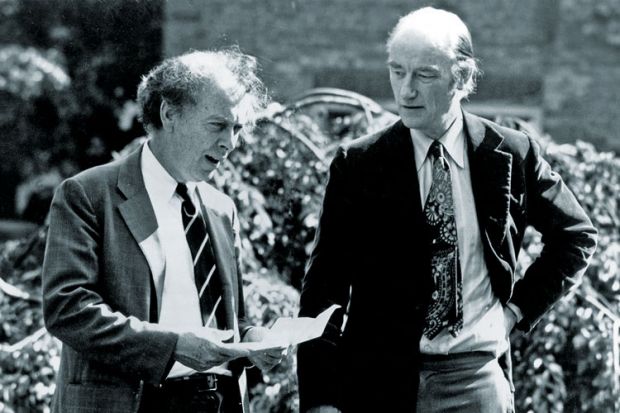“I regret to say that we cannot offer publication at this time. While your model is very appealing, referee 3 finds that it is somewhat speculative and premature for publication.”
No doubt most scientists have been on the receiving end of similar comments from journal editors, but surely Francis Crick and James Watson’s landmark 1953 papers on the structure of DNA would be immune to such quibbles?
Not so, according to Ronald Vale, professor and vice-chair of the department of cellular and molecular pharmacology at the University of California, San Francisco, who argues that the University of Cambridge pair's research would have been knocked back by Nature if they submitted their work today.
In a paper recently posted on the bioRxiv preprint service, Professor Vale says that in the past 30 years there has been an estimated four-fold increase in the amount of data required by major journals, largely because of the increased competition to publish in them.
According to the paper, “Accelerating scientific publication in biology”, prestigious modern journals increasingly insist on authors having a “mature” story. Reviewers “fall in line” with such “escalating expectations” and often demand extra experiments, making it “harder to publish just a key initial finding or a bold hypothesis”.
Professor Vale says this means that “crucial results are being sequestered from the scientific community”. This both retards the rate at which new ideas can be “tested and advanced further” and delays early career researchers from gaining independence, as they depend on high-profile publications for grants and tenure. One solution, he says, would be for biologists to publish early versions of their papers as preprints – allowing authors to receive feedback on draft manuscripts before they submit to journals – as physicists typically do.
He notes that Watson and Crick’s two papers on DNA appeared in Nature in successive months, but both were speculative and scant on data. Maurice Wilkins and Rosalind Franklin also published brief papers on the X-ray diffraction pattern of DNA at around the same time. “Thus, the story of DNA, like a Charles Dickens novel, came out in instalments,” Professor Vale says.
A spoof rejection letter imagined by Professor Vale urges Crick and Watson to back up their speculations with experiments, without which “we will not be able to publish your work in Nature and [will] suggest publication in a more specialised journal.
“Furthermore, since space in our journal is at a premium, if you do decide to resubmit, then we recommend that you combine your two submitted papers into a single and more cohesive article, potentially including the X-ray studies of your colleagues at Cambridge. I am sure that this revision will delay your Nobel Prize and the discovery of the genetic code by only one or two years.”
后记
Print headline: ‘A double helix? Bit speculative’




